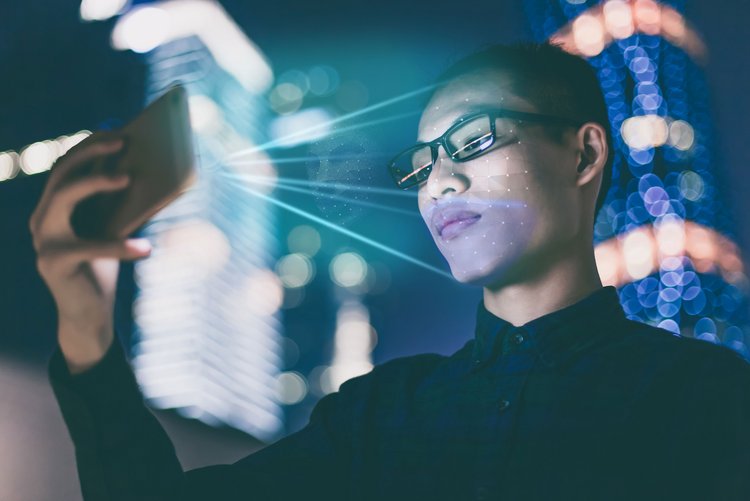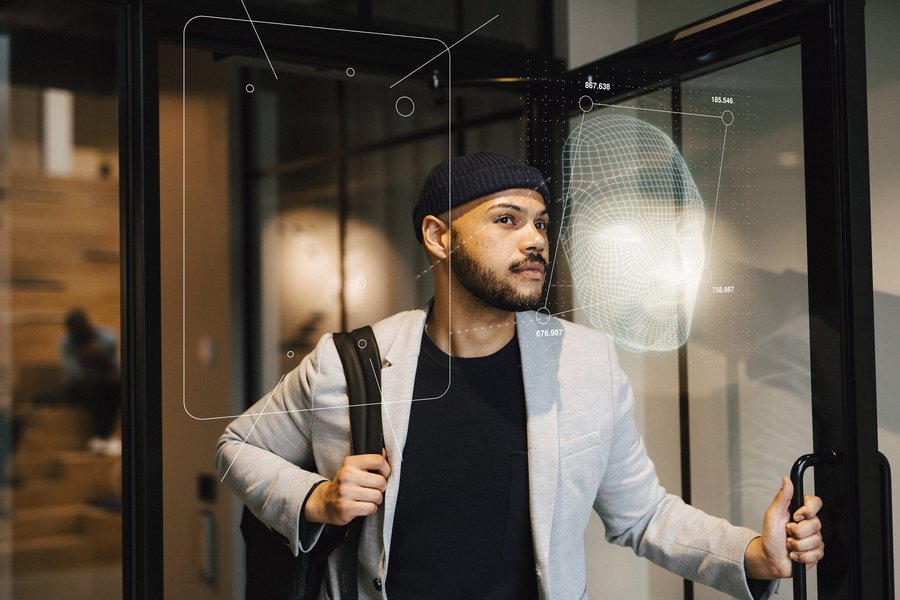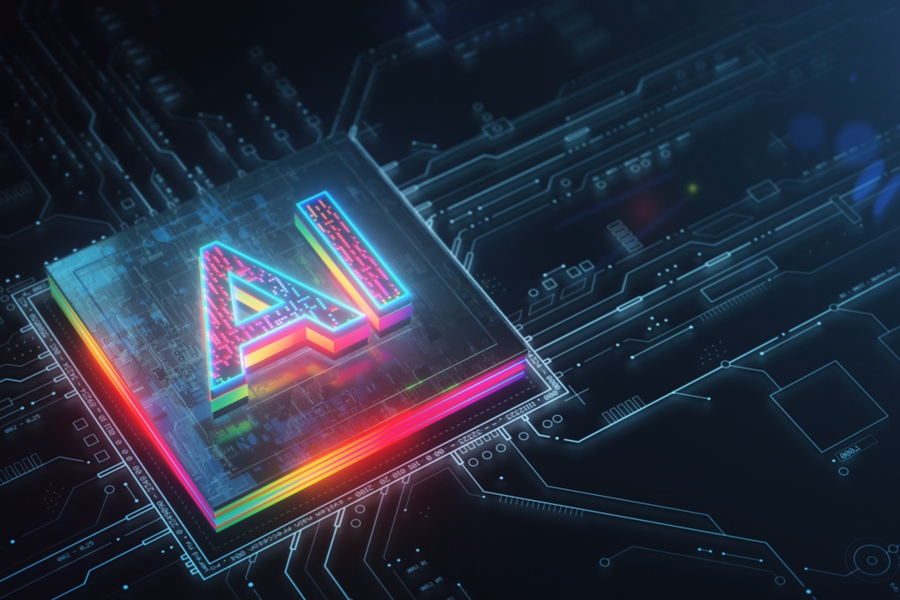Biometric solutions are changing the way we interact online, the way we pay for goods, the way we travel, bank, and authenticate our devices. But how secure are these solutions from the threat of a cyberattack? And how are the technology and data actually used? We take a holistic look at what we already know about biometrics – and ask, what’s next?

5 surprising facts about biometrics
Research into biometric technology and biometric systems is changing the way we identify and authenticate ourselves. We take a look at some of the most exciting developments in biometrics.
-
Convenience and high security
We’ve been able to verify our identity via fingerprint recognition on our smartphones since the early 2010s. But in 2014, only around 19% of smartphones had the technology. In 2018, close to 70%.
Tech-wise, fingerprint authentication might seem like old news. But exciting innovations means that payment cards with a fingerprint reader are now being used for smooth contactless payments.
G+D carried out a pilot project with Crédit Agricole Touraine Poitou in 2019 to test biometric authentication payment cards, due to be launched on the market this year.
“Employing biometrics to authenticate to and use new digital services perfectly fulfils our customers and end-consumer expectations towards a healthy balance between convenience and a high security level,” says Dr. Michael Tagscherer, G+D CTO. “It will be a smart link between us and new digital services and their seamless applications.”

After passwords, fingerprints, face, vein, and voice recognition, what else is to come? -
Multi-modal authentication
The basic design of the newest smartphones is about to change, and it’s on the back of the need for greater security and smoother authentication.
Instead of verifying our identity only via facial recognition or a fingerprint, new mobile devices with multi-modal authentication combine iris recognition and face recognition technology together. Multi-modality will increase security when making payments, for example, or accessing sensitive documents on a smartphone.
Multi-modality is necessary because individual biometric sensors can be imprecise and can give incorrect authentication. If the sensor is set at highly sensitive, the real person could be rejected, invalidating the claim of a “seamless” process.
In addition, rather than using a small sensor on the front of the phone, identity verification in new devices can instead be done via an “under-display” authentication, with the sensor fully integrated into the display.
-
Palm vein recognition
As its name suggests, palm vein recognition authenticates users by examining their vein pattern. Using “near-infrared rays,” a device measures the blood vessel pattern beneath the skin.
This creates an image of the palm, which is then used to verify a user for entry to a physical location or to log on to a computer or a network. As well as providing the same level of security as other biometric authentication procedures, the technology has the further advantage of being contactless, providing advantages in terms of hygiene.
-
Speech recognition
Speech recognition technology is what gave us Siri and Alexa. However, voice recognition is a different branch of biometrics – one that allows us to identify and authenticate by measuring the minutiae of sounds a user makes when speaking.
Developments in voice biometrics mean that any internet-connected device, or piece of hardware with a microphone, can become a highly secure device for authentication. Each user’s voice is unique, and is comprised of hundreds of unique characteristics.
Voice biometrics identifies numerous voice patterns, including accent, speed of speech, the way users emphasize letters and words, and pronunciation. These verification systems can even identify physical characteristics, such as mouth and nasal passages.
-
What next?
After passwords, fingerprints, face, vein, and voice recognition, what else is to come?
There are already many providers that offer authentication via keystroke dynamics, or type and wipe behavior on mobile devices; others can verify us by the unique shape of our ears or buttocks.
Perhaps most exciting of all is that we now know that authenticating and identifying an individual can also be done using brainwaves: the brainwave pattern of every individual is unique. By examining brain activity using an electroencephalogram (EEG), any person can be identified using an EEG signal-capturing device.
As the technology improves, devices will become even more portable and inexpensive to produce – and the potential for brainwave authentication becomes wider.
Published: 17/05/2020
Share this article
Subscribe to our newsletter
Don’t miss out on the latest articles in G+D SPOTLIGHT: by subscribing to our newsletter, you’ll be kept up to date on latest trends, ideas, and technical innovations – straight to your inbox every month.


